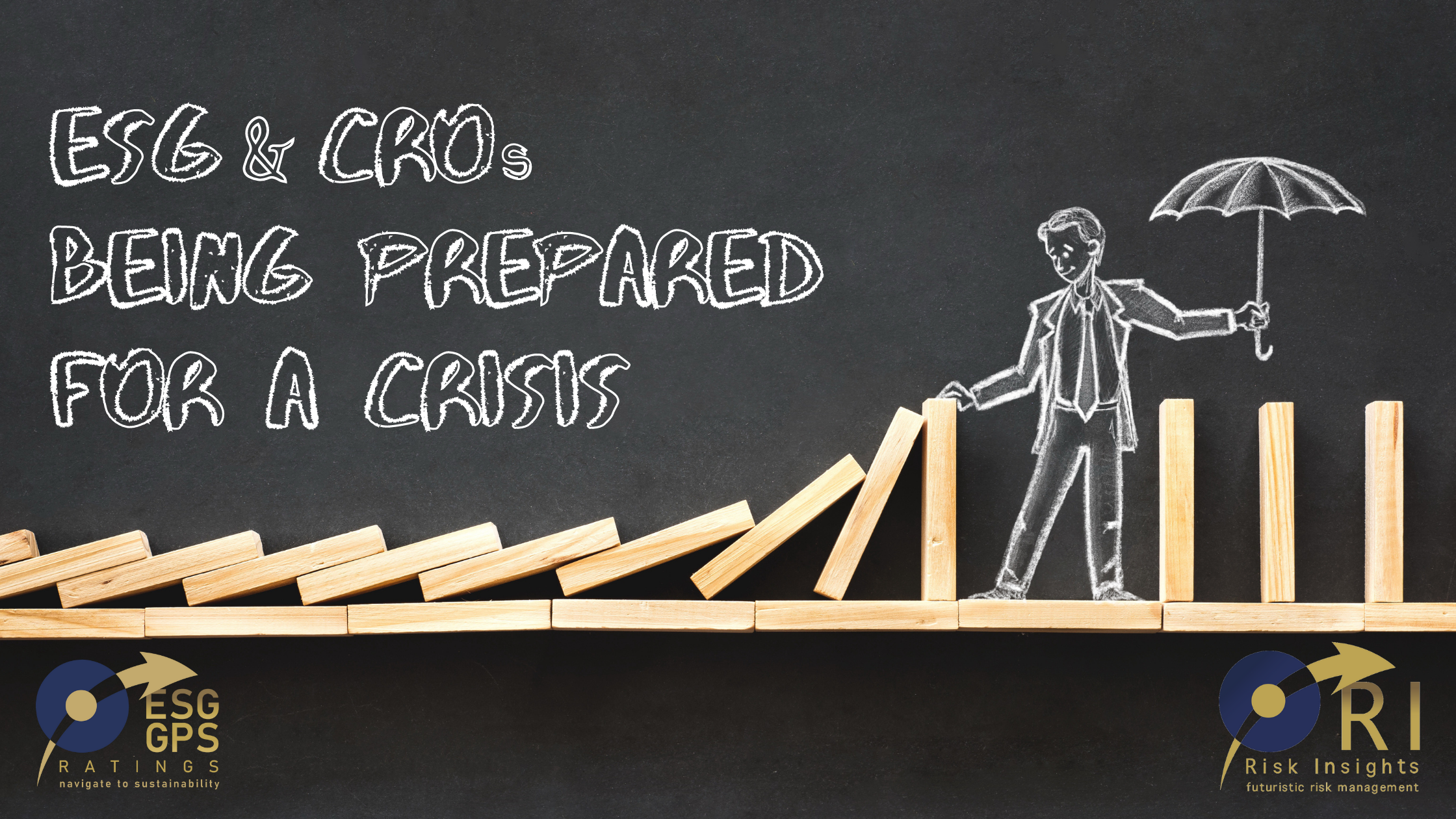ESG & CROs: Being Prepared for a Crisis
Are CROs pivoting towards ESG and “Building Back Better”? by Anushka Bogdanov & Anashrin Pillay
The Global Risk Report issued annually by the World Economic Forum (WEF), highlights the risks from a societal fracture that have manifested through emerging risks to human health, rising unemployment, widening digital divides, youth disillusionment, and geopolitical fragmentation. Amongst the highest likelihood risks over the next ten years extreme weather, climate action failure, human-led environmental damage, as well as digital power concentration, digital inequality, and cybersecurity failure are prominent. This compares to 10 years ago when economic disparity and global governance failures were the main concerns.
The events of the past weeks in South Africa combined with the global pandemic has exacerbated the rise of Stakeholder Capitalism in a new era of governance, the need for inclusive development, and the focus on E and S rather than just G. Given this backdrop, there is no better moment to reset an organisation’s ESG risk strategy and to create a new path to “build back better”. Risk Insights ESG GPS using big data, artificial intelligence, and machine learning on listed companies analyses companies on the JSE and other African stock exchanges in terms of ESG and rates companies’ disclosure against performance. It is interesting to note that the analysis suggests that governance still dominates disclosure due to compliance, whilst environmental and social disclosure are laggards. However, the pressure on organisations to recognise and mitigate E and S risk is ever-present with sustainable and impact capital allocation dictating capital flows. According to Blackrock, investors in mutual funds and ETFs invested more than US$360 billion globally in sustainable assets in 2020, more than double the amount invested in 2019. Risk Insights views South Africa and its impact on the continent on ESG as extremely important and relevant given the country’s significance on the continent’s capital markets.
The planet’s temperature has risen by about 1.1 degrees Celsius on average since the 1880s. This has been confirmed by both satellite measurements and by the analysis of hundreds of thousands of independent weather station observations from across the globe. Given that South Africa is in the top 10 for global coal consumption and top 5 for production, the transition to net-zero by 2030 or 2050 has a major impact on organisations and their respective supply chains. The circular economy is a key component in achieving the net-zero goal globally, and as we seek to rebuild our economy it is critical to consider recycling, renewable energy generation, and water savings. This strategy unpacks risks and major opportunities for the country and continent. We live in a world that is interconnected and how we respond as a nation and continent will be critical for Africa’s wellbeing and competitiveness in years to come.
The “S” factor has been emphasized throughout the COVID-19 pandemic. In July this year, the social unrest, the fight for inclusivity and equality became critical for the survival of South Africa as a country and nation. The political and economic impact has transitioned into all organisations and leaders across the country measuring impact and strategically repositioning the business to address employee wellbeing and societal dynamics which impact the future competitiveness of their companies as they manage brand and reputation to ensure they remain relevant in society.
So where does this leave the Chief Risk Officer (CRO)? The role of the CRO has been stratified to ensure that the top risks of a company which, include S and E factors be included and reported to the governance and risk committees and must be part of the ERM framework of an organisation. The Chief Sustainability Officer role does not conflict with that of the CRO as Environmental and Social Risks both that affect a company intrinsically and externally will require policies, processes, and reporting tools and resources that feed into the CRO’s risk universe. The risk strategy on ESG must align closely with the business strategy and be constantly updated. Data is a key to the CRO’s armoury and the power to inform and contribute to an organisation’s sustainability in the long run. Can CRO protect the 4 P’s, Principals of governance, People, Prosperity and the Planet? CRO’s will need to reset their thinking and training to readjust to an ever-changing landscape of risks for the next generation.
References:
- https://reports.weforum.org/global-risks-report-2021/
- http://reports.weforum.org/wp-content/blogs.dir/1/mp/uploads/pages/files/global-risks-2011.pdf
- https://www.blackrock.com/corporate/investor-relations/larry-fink-chairmans-letter.
- https://weinrebgroup.com/wp-content/uploads/2021/05/Weinreb-Group-Sustainability-and-ESG-Recruiting-The-Chief-Sustainability-Officer-10-years-Later-The-Rise-of-ESG-in-the-C-Suite-2021-Report.pdf
- https://www.mckinsey.com/business-functions/sustainability/our-insights/climate-risk-and-response-physical-hazards-and-socioeconomic-impact
- http://www3.weforum.org/docs/WEF_Aligning_to_net_zero_2021.pdf
- https://www.engineeringnews.co.za/article/circular-economy-a-key-component-of-south-africas-post-covid-19-recovery-says-creecy-2021-04-16/rep_id:4136
- BP Statistical Review


